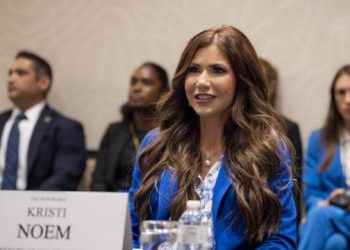Just a decade ago, such a journey would have been pure science fiction. But today, the line between scientific reality and fantasy has never been blurrier. What one person might consider fiction, another experiences in a Tesla. As someone who grew up idolizing David Hasselhoff and his self-driving Trans Am, I couldn’t resist testing the limits of Tesla’s self-driving technology. How advanced is it, really? Has it reached the point where it can safely and reliably transport a family of four on a long road trip?
The short answer: Yes… mostly. For over 99% of the trip, the car performed excellently. But that last 1%? It was a real doozy.
To celebrate my 17-year-old’s graduation from Army Cavalry basic training on Friday, we rented a Tesla Model 3 Long Range with full self-driving and an acceleration upgrade. I had been a passenger in a Tesla before but had never driven one. The experience was impressive; it felt more like sitting inside a robot than driving a traditional car.
Imagine revisiting your college town after 20 years, or returning to a city you once knew well, only to find it drastically changed. You kind of know where everything is, or where it used to be, but the changes are disorienting. Your favorite dive bar is now a big chain restaurant, and the landscape feels alien. That’s what driving a Tesla is like: a blend of the radically new and the familiar. If you can drive a gas-powered car, you can definitely handle a Tesla, but there’s a bit of a learning curve—and your experience may vary.
The Tesla is almost devoid of buttons or switches. Its lifeblood is a large, iPad-like screen that requires you to take your eyes off the road to check. However, everything from the seat adjustments to the tightness of the steering wheel and brakes is customizable. It’s the kind of car where the longer you own it, the more features you’ll discover and enjoy. (My 15-year-old especially loved setting the turn signal to make fart noises.)
The Tesla makes other cars seem outdated. It maps out your trip, telling you where to charge, how long it will take, and how much battery you’ll have left when you reach your next stop. And I must say, the voice Elon Musk chose for these cars is incredibly pleasant—very soothing.
Driving the Tesla is fun, though a bit bouncy and noisy. Its stop-and-go performance is unmatched by any non-Italian gas-powered car, and it accelerates from 0 to 60 in just 3.9 seconds. But what we were most interested in was the full self-driving feature. If it lived up to its promise, it could be a total game-changer, especially for older Americans. With a rapidly aging population, this technology could allow seniors to live independently, drive to appointments and restaurants, and enjoy a much higher quality of life.
There’s also an economic consideration. For years, Musk has promised that full self-driving would revolutionize car ownership economics. If your car can drive itself reliably, it could work for you—perhaps delivering food or offering rides while you sleep. It’s theoretically possible, as Tesla’s software updates continuously improve the car’s artificial intelligence. But what about the reality?
Here’s where we literally ran into trouble.
For most of our trip, the Tesla drove flawlessly. Regardless of the weather, the car hugged the road, made smart, safe decisions, and completed the 850-mile roundtrip with ease. In fact, for 99% of the time, it drove safer than a human. (Musk claims that, with aerial footage, you can tell which cars are using full self-driving because they stay centered in their lanes better than those driven by people.)
Our biggest gripe was that the full self-driving feature felt restricted by regulations. Due to issues with drivers napping while the car was in motion, the Tesla requires you to shake the steering wheel every minute or so. This can be quite annoying and potentially unsafe, especially when navigating curves surrounded by large trucks. If you don’t shake the wheel in time, the car disables the full self-driving feature until you stop and restart it. While I understand the logic, I don’t want to pay for a car that essentially puts me in timeout. That’s absurd.
However, a small percentage of the time, the full self-driving feature makes terrible decisions. If you’re not paying close attention and ready to take control, it could be deadly.
Our first incident occurred at a highway exit being repainted; the car tried to steer us into a guardrail. Thankfully, we intervened in time. It was frightening but somewhat understandable. Driving involves encountering all sorts of unexpected situations—construction, animals, disabled vehicles, fallen trees—so it’s almost forgivable for the car to get confused. But without human intervention, the Tesla would have crashed, putting a serious dent in any potential DoorDash earnings.
More concerning were the instances where the car’s decisions surprised both us and other drivers. On three occasions, the car suddenly braked hard, having detected an obstacle, nearly causing rear-end collisions. While you can’t fault the car for being cautious, its unpredictable actions could eventually lead to an accident.
So, here’s the verdict: Full self-driving is impressive, fun, and enjoyable, but it’s not ready for fully autonomous, human-free driving. If you’re a vigilant driver, a Tesla could enhance your independence and quality of life. But be prepared for a learning curve—this is a different kind of vehicle.
Oh, and by the way, the Army ceremony was incredible. My mom, dad, and brother—both retired military—were there to cheer for my son, Danny. It was an emotional day, but the funniest moment was when my dad handed his military ID to the visitor center guard, who immediately greeted him with, “Great to have you here, Colonel!” To which my mom promptly corrected, “Pssh. You mean LIEUTENANT Colonel.”
 Telegram is where we really talk. Don't miss out!
Telegram is where we really talk. Don't miss out!









